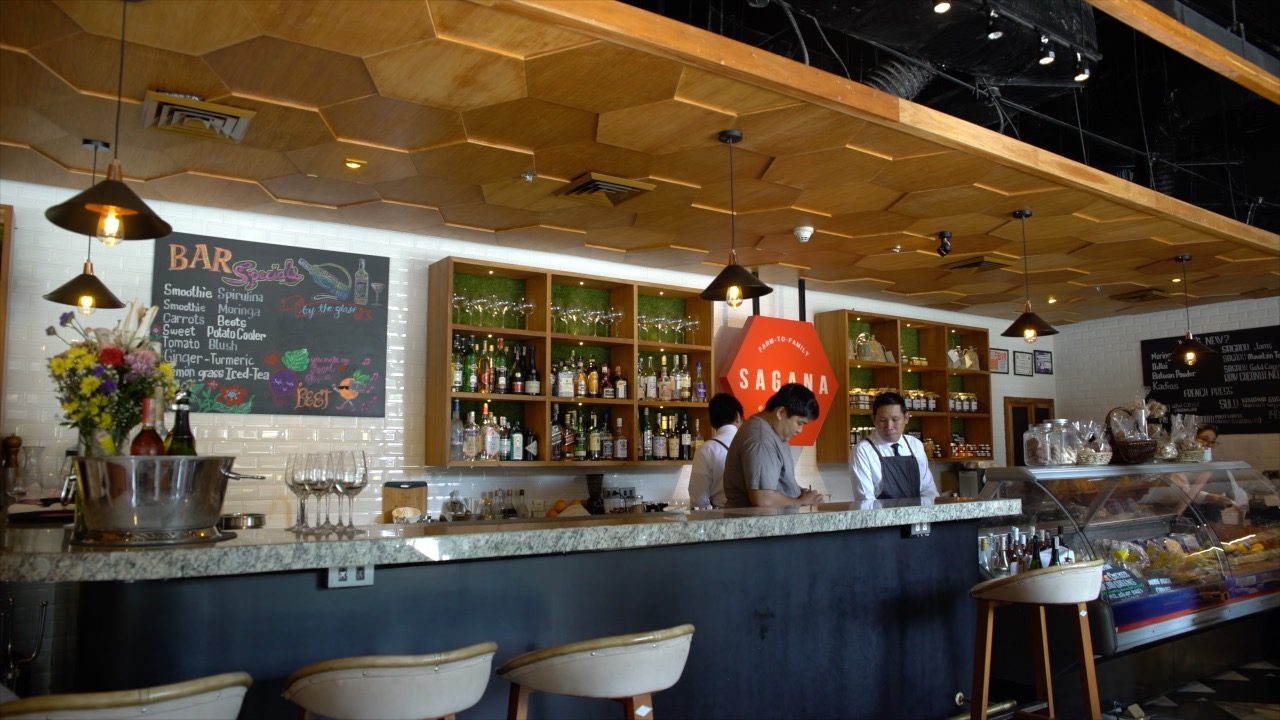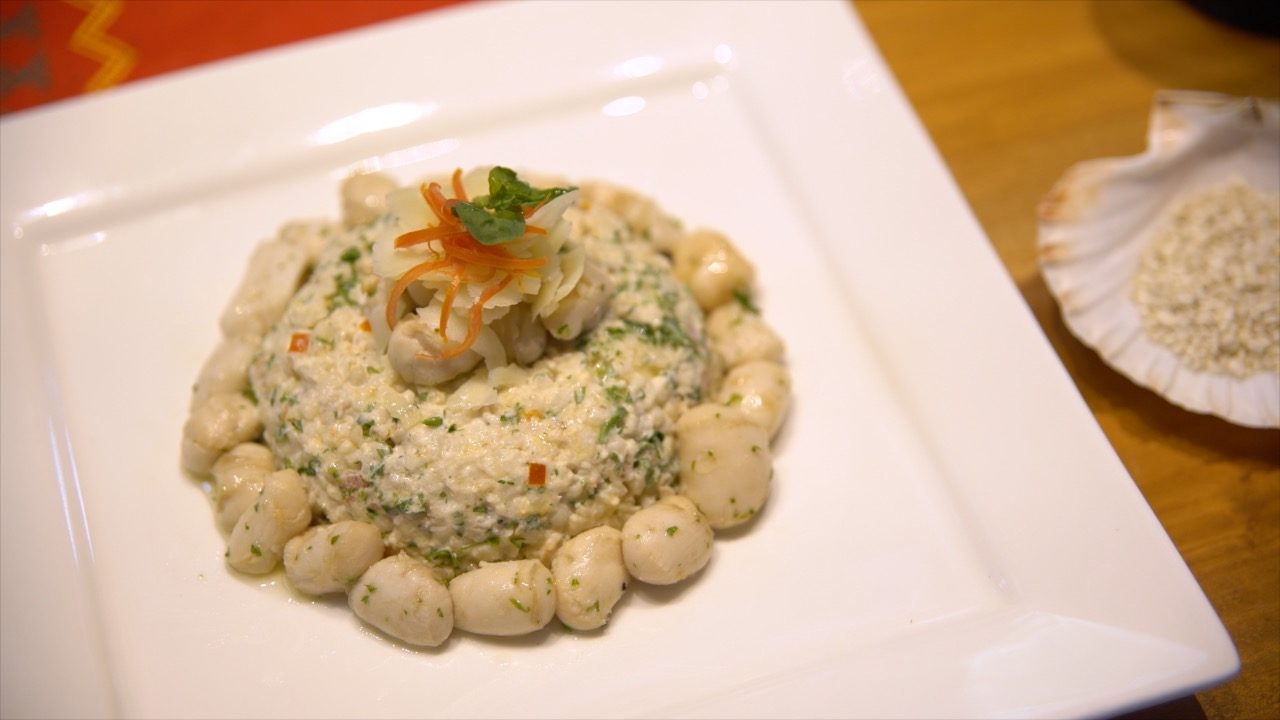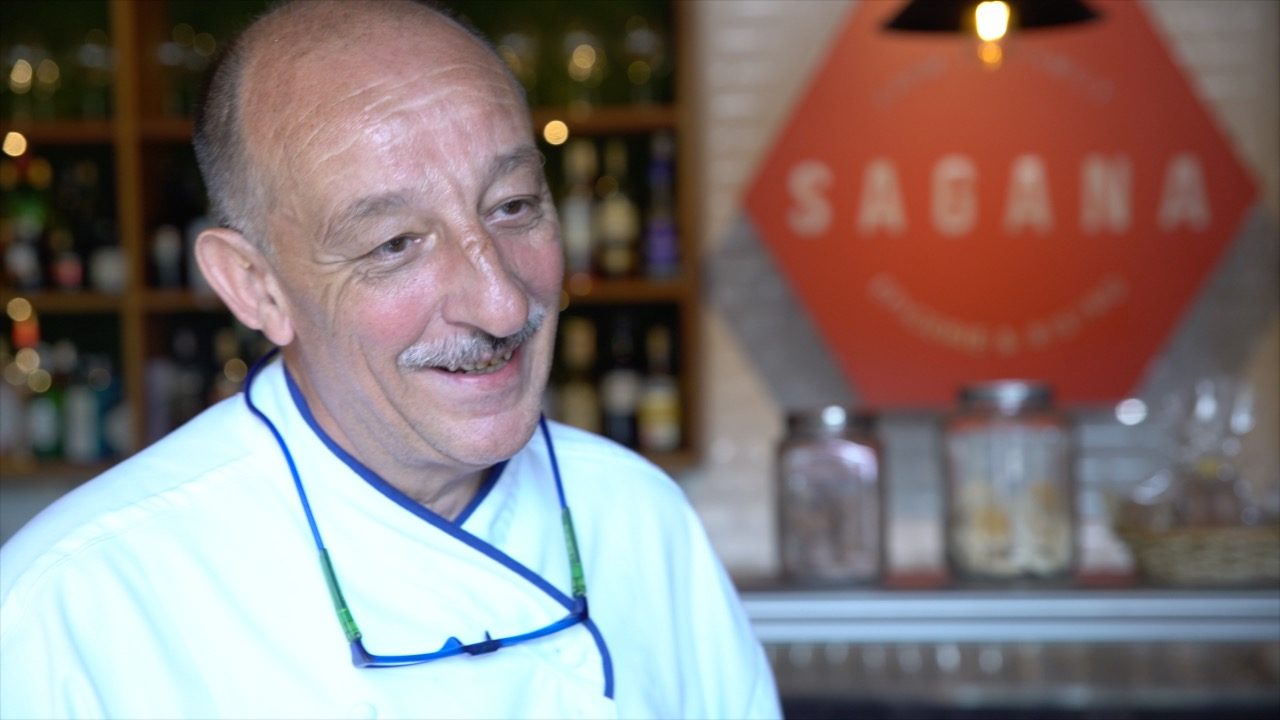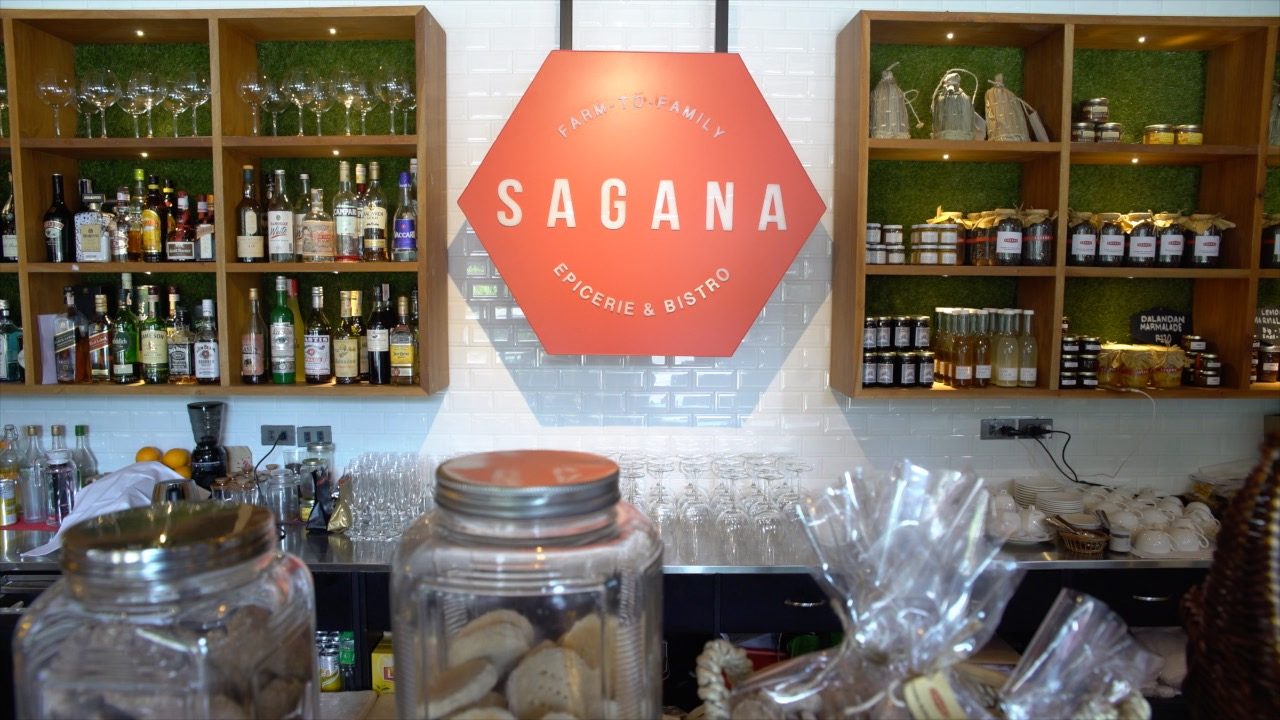SUMMARY
This is AI generated summarization, which may have errors. For context, always refer to the full article.

In the lexicon of French cuisine, there’s a magical term used to describe the sense of place imbued within food. They call it “terroir” — literally “from the earth.”
“Terroir” is the silent essence that links ingredients to a locale — the climate, the land, the people, etc. These are factors that can influence flavor, making a taste synonymous with its community. But beyond that, “terroir” has an even more profound effect; it connects to the past, conjures memories.
Though intangible, “terroir” is meant to be palpable, felt in the air. It is this ideology that sits at the center of Sagana Epicerie & Bistro.
Community over combining cuisines
Ahead of our interview, Chef Marc Aubry is already out of the kitchen.
Ready with a warm smile, some small talk, and an open hand, he guides us towards the dishes he’s prepared for the day.
“Pinauso niya yan [He made it his thing],” Restaurant Manager Johanna Toh tells us, describing how the French chef has fashioned it as his routine to go out and interact with his guests.
You could say, Sagana is a place that practices what it preaches. Its closeness to the ground — both literally and figuratively — pervasive and emanating.
Taking its name from the Filipino word for “plentiful” or “abundant.” It is common to mistake this homely restaurant as of the fusion cuisine type. It isn’t.

Rather than the amalgamation of flavors, Sagana is about combining philosophies. Sagana infuses itself with “terroir” through its use of locally-sourced ingredients in creating French-style recipes.
“I’m French, that’s what I know best, I suppose,” Aubry says with a wink.
“Farm-to-family” is what the restaurant would rather call itself. “Where do the best mangoes come from? The best bell peppers? The best talong (eggplant)? the best mussel?” Aubry posits.
Aubry seeks these quality ingredients and partners up with their suppliers, preferably small farms and businesses. His main criteria being how much respect they have for the land.
“As long as it’s natural, as long as it’s organic. That’s something strongly part of our concept.”
Planting roots
Sagana opened its doors to Philippine customers late in 2017. In no way though is Chef Marc Aubry a stranger to Philippine dining…or even their quaint spot at the ground floor of the Net One Center in BGC, as a matter of fact.
Aubry previously operated the well-loved Champetre Bistro and Restaurant at the same address from 2011 to its closing, early last year. And before that, still in the same place, he had Je Suis Gourmand which began in 2003.
Given his history, it is not surprising to see how the chef values planting roots in his new concept restaurant, Sagana.

Having been in the Philippines since 1989, it is is here where Aubry got married and raised a family, it is here where he has formed a bond with the community.
During our time with the chef, he would share fond memories of seeing repeat customers. Some loyal fans having followed him from his early days working in one of Manila’s most prominent hotels. It gives him a warm sense of satisfaction to see patrons who started as young couples now visiting his restaurant with a full family in tow.
Having spent all these years in the Philippines, he’s learned as well to adapt to Filipinos’ adventurous palette. Case in point, Sagana’s “farm-to-family” concept, which marked his first departure from formalist French cuisine.
“It’s not a trend we started though, we’re not that pretentious,” He jokes when describing the “farm-to-family” approach.
Bending not breaking
When it comes to its approach to French cuisine, Sagana chooses to give their guests enough credit. The restaurant doesn’t seek to “Filipinize” any of its dishes.
Thematically, Aubry says the cultures behind French and Filipino food are not so different. “It’s about variety. It’s about pleasing people, a good time at the table with friends and family,” he explains. “Maybe the one difference is that in France we tend to drink wine with all of our meals?”
Through “farm-to-family,” Sagana, in its own way, hopes to make French cuisine less intimidating without sacrificing integrity. “Techniques may be different, but we want to show that it’s possible to do good quality French food with properly grown ingredients.”
“Terroir” first-hand
Sagana lets customers try these ingredients first-hand not only through their dishes, but by making them available for purchase as well. Inside Sagana is a boutique section which features adlai from Bukidnon, garlic from the Cordilleras, coffee from Sulu and many more exquisite produce from across the country.
Sagana wants its guest to know that “terroir” isn’t just a feeling confined to its corners, but one which you could bring home.

A mix of mainstay and whatever’s in season, Aubry describes finding these ingredients as a constant journey as there is still much more to explore. “This country is so vast, but we’re working on it.”
Later in the day, Aubry informs us of a shipment of white asparagus coming in from Germany. He disclaimers that though 95% percent of the ingredients he uses are from the Philippines, he at times injects some of his personal favorites into dishes for special occasions.
As he goes on to describe the craft that goes into growing this unique type of asparagus — the light conditions, the ground preparations — Aubry narrows his eyes in nostalgia, a slight reverie. Somehow, at that moment, we knew that what we were seeing was “terroir.” —Rappler.com
Video shot by Jeff Digma, edited by Jaen Manegdeg and Emerald Hidalgo
Add a comment
How does this make you feel?
There are no comments yet. Add your comment to start the conversation.